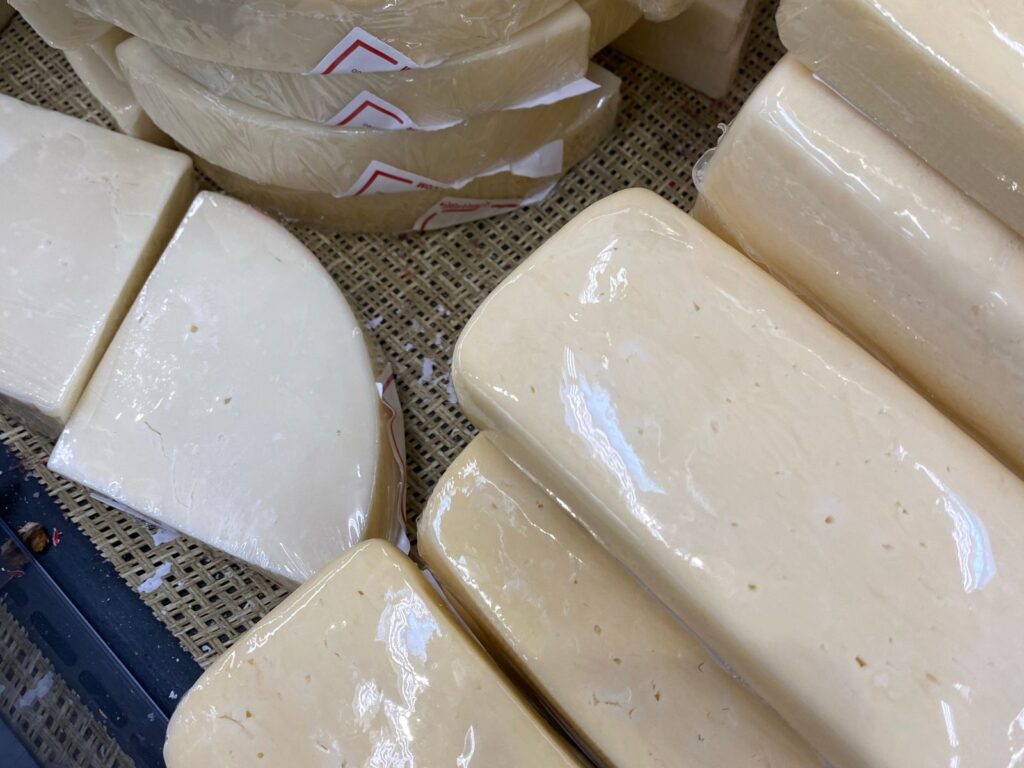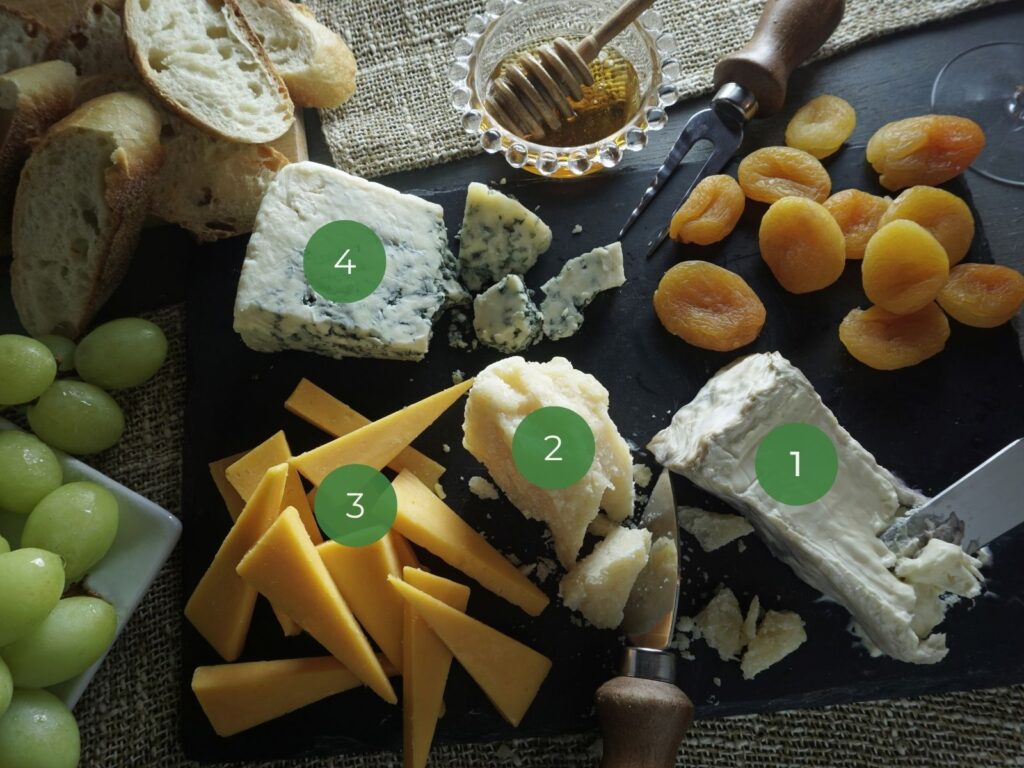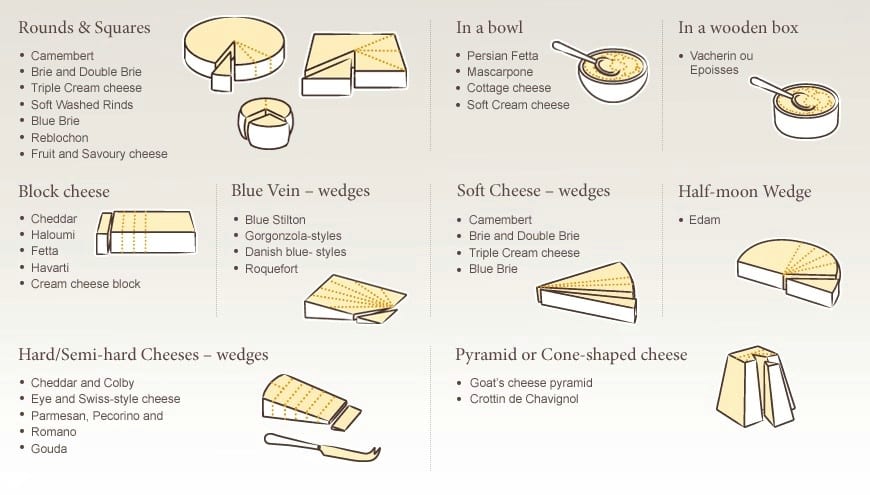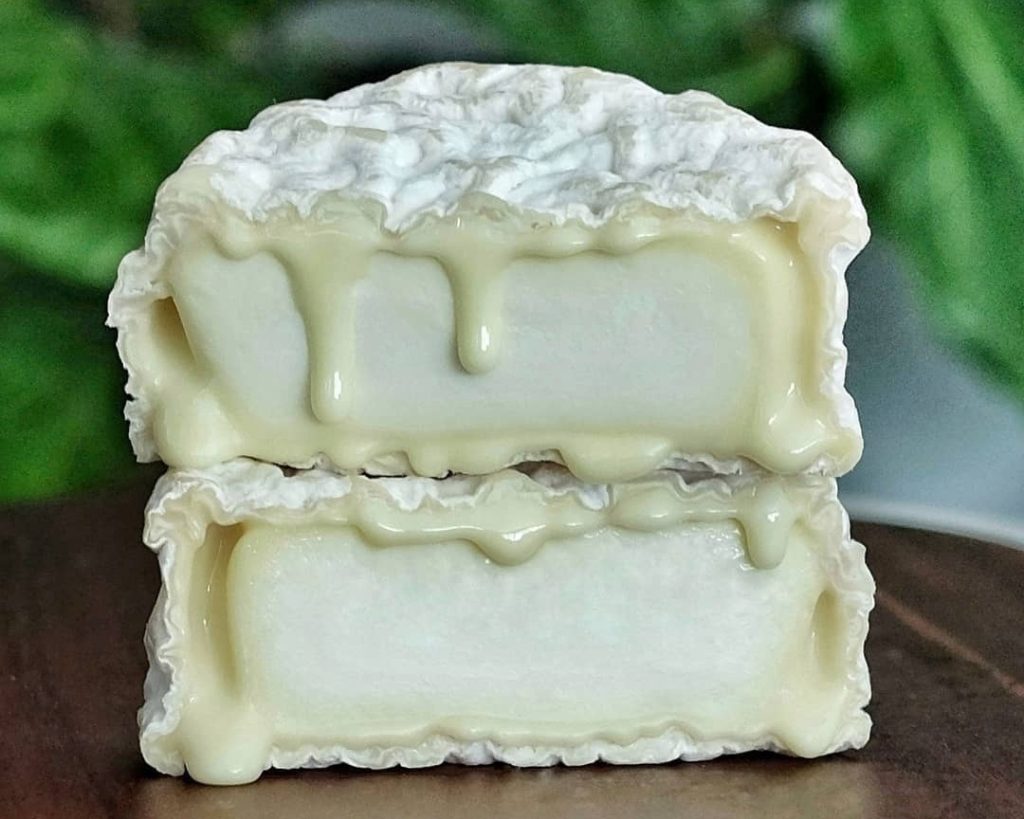The 10 Commandments of Cheese are a set of 10 rules you have to abide by if you want to live a righteous turophile life. Read on to find out how to take your cheese eating experience to the next level. And impress all of your friends with your wisdom.

SEE ALSO: Why you should never freeze cheese →
I Thou shalt not wrap cheese in plastic

Let’s start with the one I consider to be the most criminal of sins! Do NOT wrap cheese in plastic unless you want to kill its soul.
Cheese is a living organism. And, as such, it needs to breathe. This rings particularly true for soft cheeses that are still intact. They will actually continue to mature in your fridge. Great alternatives include waxed paper, aluminium foil or beeswax wraps.
II Thou shalt not freeze cheese
All cheeses contain water. Fresh and soft cheeses have the highest water content whereas semi-hard and hard cheeses are lower in moisture.
And what does water do when frozen? It expands! This process will ruin the molecular integrity of most cheeses and change the texture significantly. When the frozen cheese is subsequently thawed, it will have liquid water gushing out of it. Not what we want right?
III Thou shalt not mix thy cheese knives

The number 1 rule of cutting cheese is: “Do NOT cross-contaminate”. And there is good reason for this. All cheeses are alive. They have living mould cultures on the surface and throughout their insides. And each culture is often specific to that cheese.
Using one knife for multiple cheeses will carry the mould from one to another. Overall, this will ruin much more than the appearance of the cheeses. Their flavour and aroma will be equally as affected. You can read more about cheese knives here.
IV Thou shalt not leave the rind behind

Most cheese rinds (the outside bit) are edible, whether it be the bloomy white rind of a Camembert or the earthy natural rind of a clothbound Cheddar. Actually, the rind is often where you will find the most intense aroma and flavour. Other than missing up on this transcending sensory experience, leaving the rind behind is also terrible cheese eating etiquette.
This is especially so when a group of people are sharing a soft white mould cheese and one person scoops out all of the inside (paste) and leaves only the rind on the plate!
SEE ALSO: Buy our Don’t Leave The Rind Behind Grocery Bag →
V Thou shalt grate thy own cheese

There are so many reasons why you should grate your own cheese, ranging from the health benefits to the opportunity to support a small local business. You can find out more by reading my article “5 Reasons Why You Should Grate Your Own Cheese”.
VI Thou shalt start with the mildest cheese

Undoubtedly, the best way to ruin a thoughtfully prepared cheese plate is to eat the blue or the washed rind cheese first. Indeed, the more robust flavour will overpower your taste buds to the point that you will not be able to fully appreciate the intricacies of the milder cheeses and components of the cheese platter.
As a general rule, start with the mild and creamy cheese, then move to the medium flavoured semi-hard or hard cheese before finishing up with the blue or washed rind cheese.
VII Thou shalt not deface the cheese

There is a right way and a wrong way to cut cheese. Cutting various types of cheeses in an appropriate manner will ensure that the flavour and texture is balanced across each portion when served.
The correct technique will also allow pre-cut portions of cheese to stay fresh for longer. You can consult the image above for tips on how to cut some of the most common types of cheese.
VIII Thou shalt not eat cheese straight out of the fridge

As a base rule, you should always take your cheese out of the fridge at least 30 minutes before serving. Allowing the cheese to get to room temperature is critical because that will help loosen up the texture and liberate the more subtle flavours.
Furthermore, I would go as far as to say that for some soft cheeses like a triple cream or a soft washed rind, you will want to leave the cheese at room temperate for at least one hour.
IX Thou shalt eat local cheese

Once again, there are many reasons why you should abide by this commandment.
Those range from supporting a small local business to minimising the carbon footprint of the cheese as it travels from the cheesemaker to you via a retailer.
I do want to point out that I’m not saying that you should not eat imported cheese. That would be a real shame because there are some amazing artisanal cheeses that are made all around the world. The key here is trying to find the right balance between the two.
X Thou shalt buy cheese from a monger

I wanted to finish with what is for me the single most important commandment.
The importance of this one can not be overstated. Buying from a monger ensures that you will get the ultimate cheese experience.
Self-selecting cheese from a huge display can be very overwhelming. Talking to a knowledgeable monger will help you choose a cheese that is to your liking, and will also be in prime condition by the time you want to consume it.
SEE ALSO: Buy our Bought From My Monger Grocery Bag →
The Righteous Turophile
Now that you know the 10 Commandments of Cheese, you are fully prepared to be a Righteous Turophile. Lead by example, spread the Curd Word and, as always, Praise Be Cheesus!




Wonderful. I have learnt so many precious details on cheese which I did not even dream of. Thanks so much.
What is the proper temperature and humidity to store cheese. I have a small wine fridge I’d like to convert to a cheese cave.
Hey Lesley, thank you for the comment. Whilst there can be a slight variation from one cheese to another, a range of 5-8°C (40-45°F) will keep most cheeses fresh and safe.
While I agree with most of the commandments, I would argue against number 4. While cheese rinds are edible and should be eaten in some cases, I don’t think this holds true for all cheeses. A Vacherin Mont d’Or, an aged Munster, even an Epoisses, most of the time? No, thanks. Even with other cheeses, eating the rind does not always add to the experience (at least, not in a pleasant way). I’ve tried (again) after reading the commandments, but I have to disagree (and before you ask, yes, those were all proper raw milk cheeses, AOP and all, where applicable).
Thank you for your comment Daniel. I agree that certain rinds (e.g. Mont d’Or) are not meant to be eaten. I was mostly referencing to soft, white mould cheeses like Brie and Camembert. But having said that, on a personal level, I quite enjoy eating the rind of Epoisses. Maybe I’m just a sucker for the flavour/aroma punch!